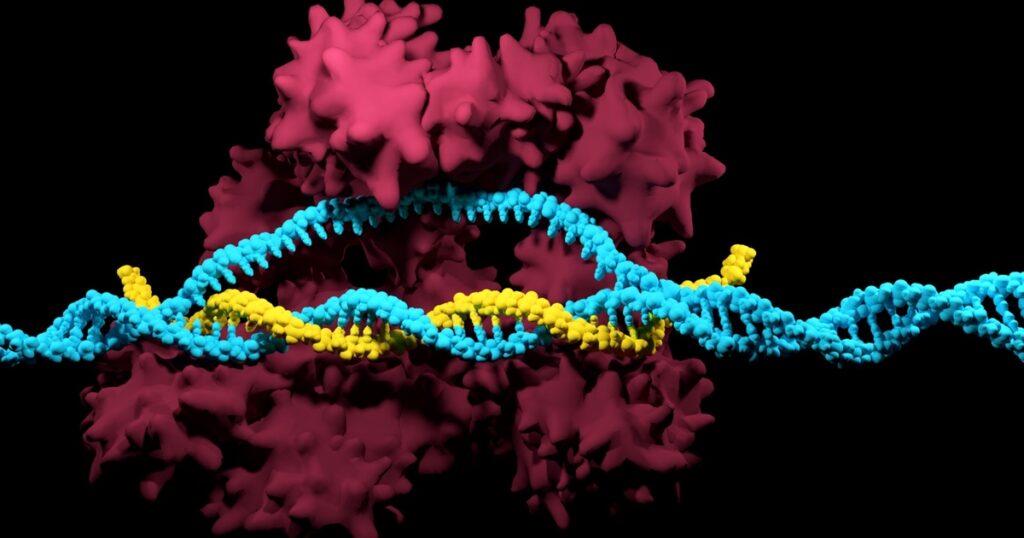What is CRISPR-Cas9?
CRISPR (pronounced “crisper”) is shorthand for CRISPR-Cas9, where Cas stands for CRISPR-associated. CRISPR is an enzyme that acts like a pair of molecular scissors, capable of cutting strands of DNA. This enzyme is a family of DNA sequences found in the genomes of prokaryotic organisms such as bacteria. These organisms use CRISPR-derived RNA (RNA is one-stranded, whereas DNA is double-stranded) and Cas proteins to foil attacks by viruses; the organisms cut the DNA of viruses and store bits of the DNA into their own genome to be used against the same type of foreign invaders.

Recently, there has been a discovery of another function of CRISPR: archaea––microorganisms that are often very similar to bacteria in appearance, but different in physiological properties––also use them to fight parasites.
Professor Dr. Alexander Probst, a microbiologist at the Research Center One Health Ruhr at the Research Alliance Ruhr, and his team discovered the reason for this in the genetic scissors in the genome of the microorganisms. They say “The archaea have incorporated the parasitic DNA. If a parasite with the same DNA now attacks the organism, the foreign genetic material is probably recognized by the CRISPR system and presumably decomposed. If there has been a CRISPR recognition, the microorganism is very likely to be a parasite.”
In the future, this will probably help better understand important metabolic processes, such as the carbon flow in ecosystems.
Genome Editing
Scientists adapted this immune defense system and by doing so, can easily alter DNA sequences and modify gene function. These technologies allow genetic material to be added, removed, or altered at particular locations in the genome. Once the DNA is cut, researchers use the cell’s own DNA repair machinery to add or delete pieces of genetic material, or to make changes to the DNA by replacing an existing segment with a customized DNA sequence. This process is called genome editing.
Currently, genome editing is used in cells and animal models in research labs to understand diseases, including single-gene disorders such as cystic fibrosis, hemophilia, and sickle cell disease. It also holds promise for the treatment and prevention of more complex diseases, such as cancer, heart disease, mental illness, and human immunodeficiency virus (HIV) infection.
Ethical Challenges
CRISPR/Cas offers new possibilities to render humans immune to a range of diseases or to repair fatal gene defects in a human embryo, which relies on genome modifications in humans. The debate boils down to two sides in a “go/no-go” standoff. One group insists that research on human germ-line editing should advance to reap the scientific and clinical benefits, while the other camp argues that editing the human germ line is too unsafe, or crosses an ethical line.

While genome editing may prove to be useful and safe and can aid researchers to develop better medicines and cures for various diseases, the ethical line is blurry at times when it’s involved with reproductive purposes and embryos.

